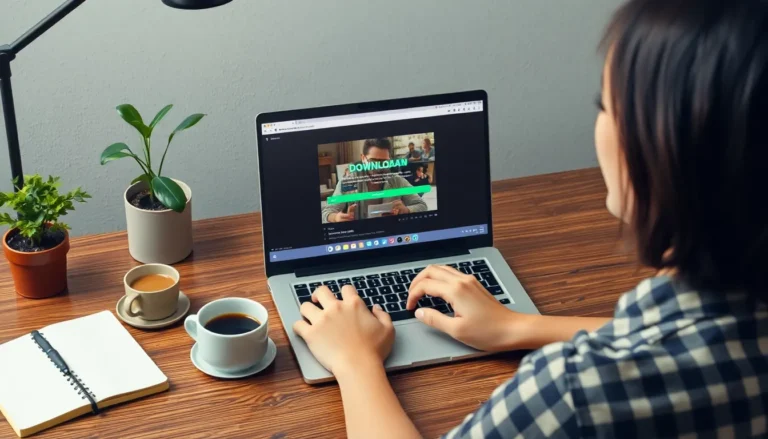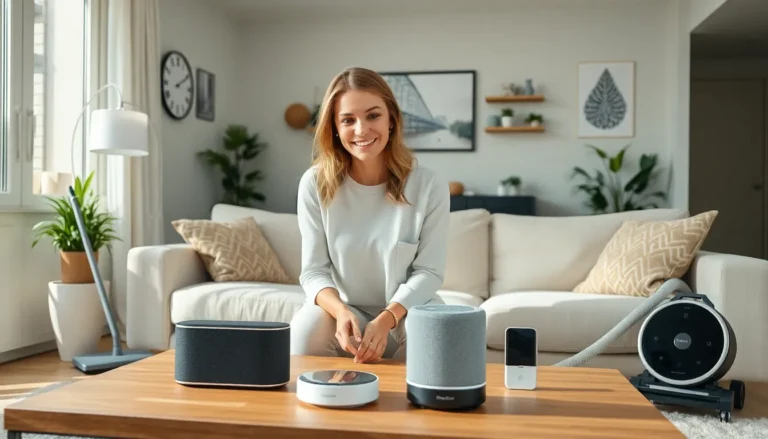In a world where distractions are just a swipe away, push notifications are like that friend who always reminds you of the important stuff—like when your favorite pizza place has a special offer. Setting them up isn’t just a nice-to-have; it’s essential for keeping users engaged and informed.
Imagine your app sending timely reminders that make users feel like you’re reading their minds. From personalized updates to important alerts, push notifications can transform user interaction from a casual glance to an enthusiastic tap. But how do you navigate the setup process without losing your sanity? Fear not! This guide will walk you through the ins and outs of push notification setup, ensuring your users stay connected and craving more of what you have to offer.
Table of Contents
ToggleUnderstanding Push Notification Setup
Push notifications are brief messages sent directly to users’ devices. These notifications can appear on smartphones, tablets, and desktops, providing timely updates or alerts.
What Are Push Notifications?
Push notifications deliver messages directly to a user’s device via an app or web service. Users receive these notifications even when they aren’t actively using the app. Each notification can contain essential information, such as news updates, reminders, or marketing promotions. Different types of push notifications include promotional messages, transactional alerts, and personalized content. With the right setup, businesses can engage users effectively and convey important messages quickly.
Importance of Push Notifications
Push notifications play a crucial role in user engagement. They keep users informed about updates, promotions, and other essential content. By delivering relevant information, businesses can increase user retention rates and drive app usage. Data shows that timely notifications trigger user action, such as opening an app or responding to an offer. Engaging messaging can lead to higher conversion rates, turning potential customers into loyal users. The strategic use of push notifications enhances communication and creates meaningful interactions with users.
Steps for Push Notification Setup
Setting up push notifications involves several critical steps that ensure effectiveness and user engagement. Follow these guidelines for optimal results.
Choosing the Right Platform
Selecting the appropriate platform for push notifications impacts delivery and user engagement. Explore options like Firebase Cloud Messaging, OneSignal, and Pusher, which cater to various needs. Evaluate each platform based on pricing, features, and integration ease with existing systems. Consider platforms that allow segmentation for targeted messaging. Analyze user reviews and case studies to understand the platform’s reliability and performance.
Configuring Your App for Notifications
Configuring your app effectively lays the groundwork for successful notifications. Start by integrating the chosen platform’s SDK into the app code. Set up necessary permissions to allow notifications to reach users’ devices. Ensure the notification payload includes essential elements like title, body text, and icon. Test notifications in development before launching them to users. Implement personalization options to enhance user experience and increase engagement levels. Regularly update and optimize the configuration to incorporate feedback and improve performance.
Best Practices for Effective Push Notification Setup
Establishing best practices for push notification setup enhances user engagement. Focusing on timing and frequency significantly influences effectiveness.
Timing and Frequency
Optimal timing is crucial for push notifications. Sending messages during peak user activity hours leads to higher open rates. Additionally, frequency matters; avoid overwhelming users with excessive notifications to prevent disengagement. Aim for a balanced approach by analyzing user behavior and engagement patterns. Adjust delivery times based on data insights, ensuring notifications align with users’ schedules. Testing various time slots provides opportunities to discover the best performance for particular user segments.
Personalization and Segmentation
Personalizing push notifications improves user interactions. Segmenting the audience allows for tailored messaging, resulting in higher conversion rates. For example, sending exclusive offers to loyal customers enhances brand loyalty. Incorporate users’ preferences and behaviors to make notifications relevant. Utilize data analytics to inform segmentation strategies, enabling more focused campaigns. Crafting unique notifications for different segments fosters a stronger connection between the user and the brand, encouraging ongoing engagement.
Common Challenges in Push Notification Setup
Setting up push notifications presents various challenges that can hinder effectiveness. Understanding these common obstacles ensures smoother integration and better user engagement.
Technical Issues
Technical difficulties frequently arise during setup. Compatibility problems between platforms may prevent seamless notifications. Developers often encounter issues with SDK integration, leading to delays in feature rollout. A lack of clear documentation can further exacerbate these challenges. Furthermore, poor internet connectivity can delay delivery, resulting in missed engagement opportunities. Regular testing helps identify and resolve these technical concerns promptly.
User Engagement Problems
User engagement remains a critical challenge when implementing push notifications. Inundating users with excessive messages can lead to notification fatigue, decreasing overall engagement. High opt-out rates may signal a disconnect between user preferences and notification content. Timing also plays a significant role in user response; messaging outside of peak hours can lead to overlooked notifications. An analysis of user behavior and preferences aids in crafting relevant messages that resonate, encouraging continued engagement.
Conclusion
Setting up push notifications is a powerful strategy for enhancing user engagement and ensuring that audiences stay connected. By following the outlined steps and best practices, brands can effectively communicate important updates and offers while avoiding common pitfalls. Personalization and timing play crucial roles in crafting messages that resonate with users.
Regular testing and optimization of notifications will help maintain their effectiveness and prevent user fatigue. With thoughtful implementation, push notifications can transform user interactions into meaningful connections, driving higher conversion rates and fostering loyalty. Embracing this tool can ultimately elevate a brand’s communication strategy in today’s fast-paced digital landscape.




